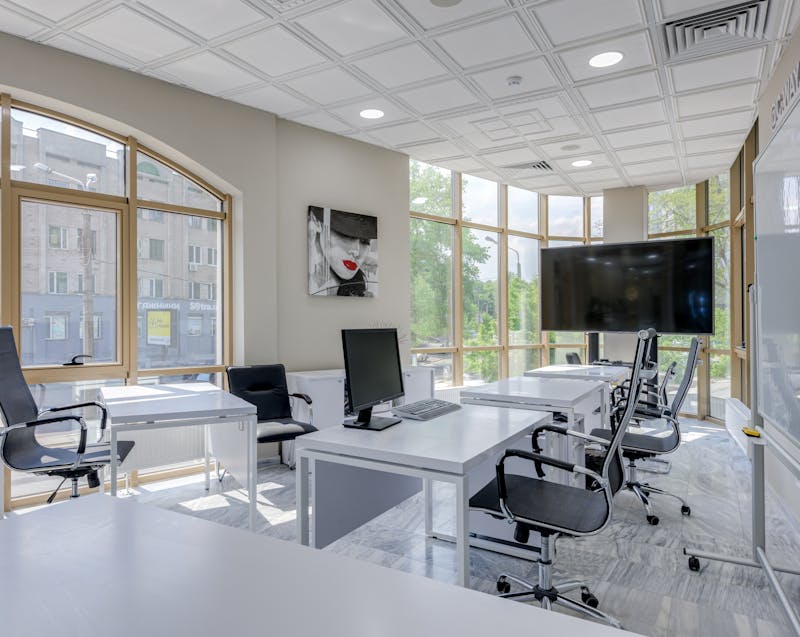When businesses pivoted to remote work operations during the pandemic, employees had to leave their office spaces and find a rhythm in working from home. This was a stressful time of change as it transformed how we live and work. The challenge for employers then was to find effective ways to remotely support employee productivity and well-being.
The past year has made it apparent to each of us that work environments do play a huge role in employees’ ability to focus and maintain a healthy mindset. This applies not just to home workstations, but also the physical workplaces employees report to.
The world is slowly opening up, and with it the offices that teams indefinitely left behind for remote work. Employers now have the responsibility to ensure that their workplaces promote physical and mental health and safety.
Why Do Healthy Workspaces Matter?
The average person will spend around 90,000 hours of their life at work. In other words, you will likely be working for one-third of your whole life. These numbers are enough to conclude that your work environment has a significant impact on your quality of life.
Work environments involve a number of factors, too. The concerns that come to mind are usually practical aspects, including salary, office culture, and daily work demands. While these are vital to creating a healthy workplace, something organizations must also keep in mind is the physical appearance and layout of the workplace.
Your employees are exposed to these places every day as they accomplish work. They deserve one that promotes health and productivity.
Physical Aspects to Consider
These are some parts you need to fix to build an office that upholds the overall well-being of your team.
1. Aesthetics still matter.
We understand that many people say that substance matters over appearance. However, in office design, appearance contributes to the substance of your workplace. Do not let aesthetics take a backseat in the pursuit of comfort and safety.
First, look at the bones of your office space. What is the state of your walls, windows, and flooring? Do they invite employees to stay in the area? If you want to elevate your workplace on a budget, materials such as stick-on shiplap panels or wallpaper are effective and affordable choices for beautifying the space.
You should also choose durable, presentable furniture to complement the basic design of your office. Make it a point to get seats that are both ergonomic and visually appealing, as these two features encourage your employee productivity. Remember that team members spend much of their day seated in their cubicles, so they need a space that serves its purpose well.

2. Let the light in.
Natural light does so much for the general health of humans. Having plenty of it in the office provides various benefits for both physical and mental health.
Firstly, natural light provides free vitamin D that keeps the bones strong and the heart healthy. Ample exposure to it also helps people sleep better at night. When you have enough natural light, there is less risk for eye strain and headaches that could keep employees from doing their work.
Additionally, natural light enhances the mood. This allows employees to better concentrate on tasks and maintain a positive attitude towards their jobs.
3. Mind your air quality.
Now that concerns about COVID-19 are likely to remain at the back of everyone’s minds despite many resuming pre-pandemic practices, air quality is also important. A well-ventilated office means minimal airborne pollutants and carbon dioxide. Accomplish this by having adequate air filtration systems and well-maintained HVAC units in the office.
Good air quality not only makes people feel safer from viruses such as COVID-19. It also helps them stay focused on their responsibilities, as studies suggest that offices with proper ventilation report better cognitive performance from employees.
4. Have spaces for solo work and collaboration.
Finally, you must accommodate the variety of work styles your staff have in your physical office. Have both solo work areas and collaborative spaces that everyone can use as they need.
Areas for collaboration, usually in the form of meeting rooms, are important as they promote teamwork and provide venues for brainstorming for your projects. However, solo desks and cubicles also help team members concentrate on their individual tasks with little distractions.
An appealing workplace does not only help your organization’s employee retention. It also makes you an ideal choice for new recruits in the future. Young professionals want to work in progressive, innovative workplaces that value its employees, which is something that any forward-thinking company should strive to be.





